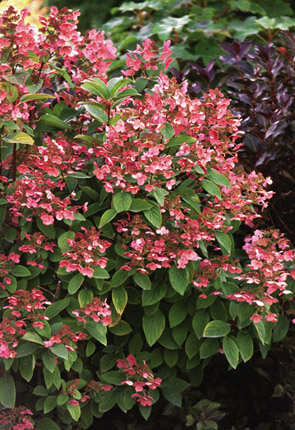Refresh Your Tired Garden - Including eco recipes for pests and weeds
Refresh Your Tired Garden - Including eco recipes for pests and weeds

Where did the summer go? We are already into the first week of August, and if your garden is anything like mine, it could use a little freshening up. We have had many bouts of extreme heat and frequent torrential downpours which can take their toll on perennials in full flower (like tall garden phlox and helianthus) leaving them drooping to the garden in a sodden mess. Clumps of daylilies, lady's mantle and cranesbill, may be looking a little messy in the border. Perhaps your annuals are leggy and tired looking.
Perennials Shear back early perennials by half. Lady's mantle, cranesbill, spurge, catmint, creeping phlox and centaurea montana will all have new foliage peeking through the old, so cut away the older leaves and let the new, fresher foliage come through. If your daylily foliage is looking long and messy, just trim them back a bit (like a good haircut!). In order to deal with drought and heat, some established perennials may jettison their foliage. To test if your perennial is still alive just give it a gentle tug...if the roots hold fast, it should be fine. If you find you have unsightly gaps in your beds, buy some container plants to fill in until the end of the season. (There will soon be a deluge of fall asters and chrysanthemums available everywhere.)
Onto your annuals...they strive to produce seed, and much of their energy is directed toward this task. If you deadhead, pick the spent flowers before they start to set seed, the plant will produce more flowers in an effort to reach its ultimate goal. This practice keeps annuals in the flowering stage longer and usually results in a greater number of blooms. Annuals such as cosmos, geranium, marigold, salvia, zinnias, and other single stem flowers particularly benefit from this practice. Pinch back annuals that are looking sad and leggy by at least half - they'll reward you in spades by producing fresh new foliage and flowers. Don't forget to feed them with a fertliizer with a high middle number, especially heavy feeders such as petunias, geraniums and impatiens.
It isn't too late to mulch - get out the weeds and put down a thick layer of cedar mulch. Mulch not only keeps out weeds, it repels insects and keeps the moisture in the soil. It also smells wonderful.
Two of my biggest headaches in the garden every year are the sawfly larvae (little green worms) that get on all my roses, and left undisturbed, will strip off the foliage in a few days. To prevent these little devils (or other garden pests like aphids) from making your garden their new feeding ground, spray regularly with an insecticidal soap or a castile soap/neem mixture. (See recipe below.) Once they are well established on your plants, it is a little more difficult to deal with them. You can hand-pick them off if you aren't dealing with a large infestation but sometimes I have had to resort to using Safer's Trounce. The active ingredients in Trounce are 20% potassium salts of fatty acids (sometimes called “soaps”), and 0.2% pyrethrums (made from the dried flower heads of pyrethrum plants.)
Another annoyance is weeds growing in between paving and patio stones and alongside foundation walls. Attempts to extract them generally result in leaving behind the roots only to have the weed just grow right back again. Try the eco-friendly and very effective recipe below for this problem. You may have to apply three times over the summer and just be careful to keep it away from the plants you do want to grow (do not pour on weeds in your grass!).
If you follow the suggestions above, your garden will look neat and refreshed and good for at least another two months of enjoyment. Long live summer!
Neem/Soap Spray
5 ml neem oil* , 2 ml mild liquid soap (such as Dr. Bronner's Castile), 1 litre of warm water
Mix above well and spray on all garden plants and foliage to repel insects (avoid spraying during mid-day sun)
*Earth to Body will sell bottles of pure neem oil upon request. Price is approximately $9.99 for 100 ml
Natural Weed Killer
1 litre of white vinegar, 1/4 cup salt, 2 tsp. liquid dish soap
Mix above well and spray (or pour from watering can) in between patio stones and along foundation walls. It actually speeds up the process if you do this on a hot sunny day. Avoid getting the mixture on any desirable plants or using just before a rainfall.
Author's note: This year will be the last for some of my tall garden phlox (though I do love them!). They become so heavy with flowers, the first heavy rainfall usually topples them. I have just bought two beautiful Hydrangeas Paniculata 'Quickfire' which are in full flower and just stood up to three torrential downpours. The poor phlox are flattened (again!) while they are standing proud and upright.
